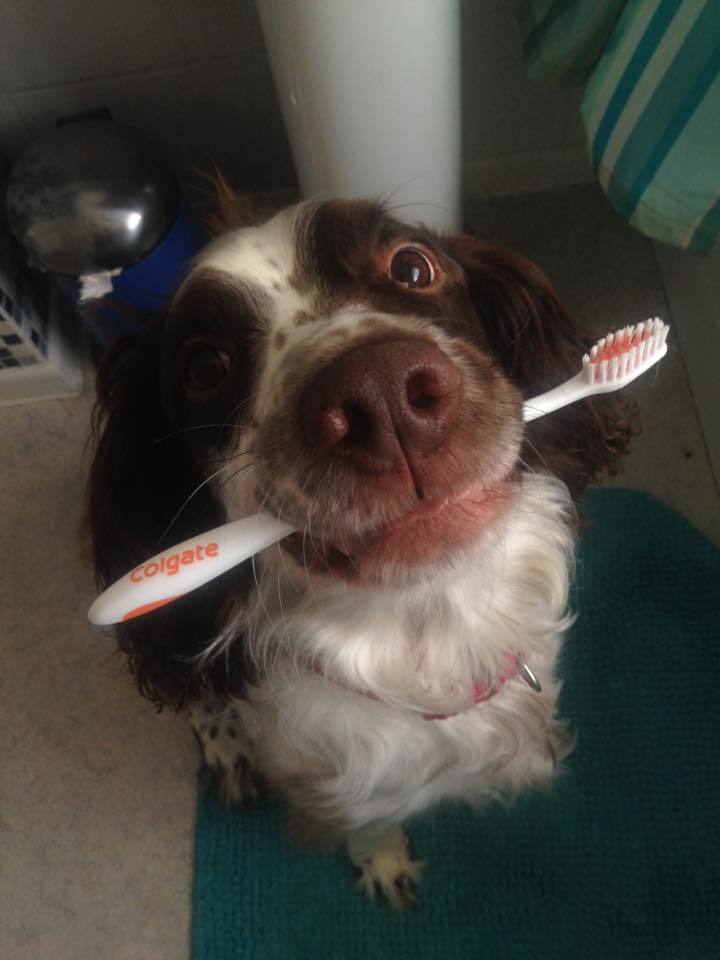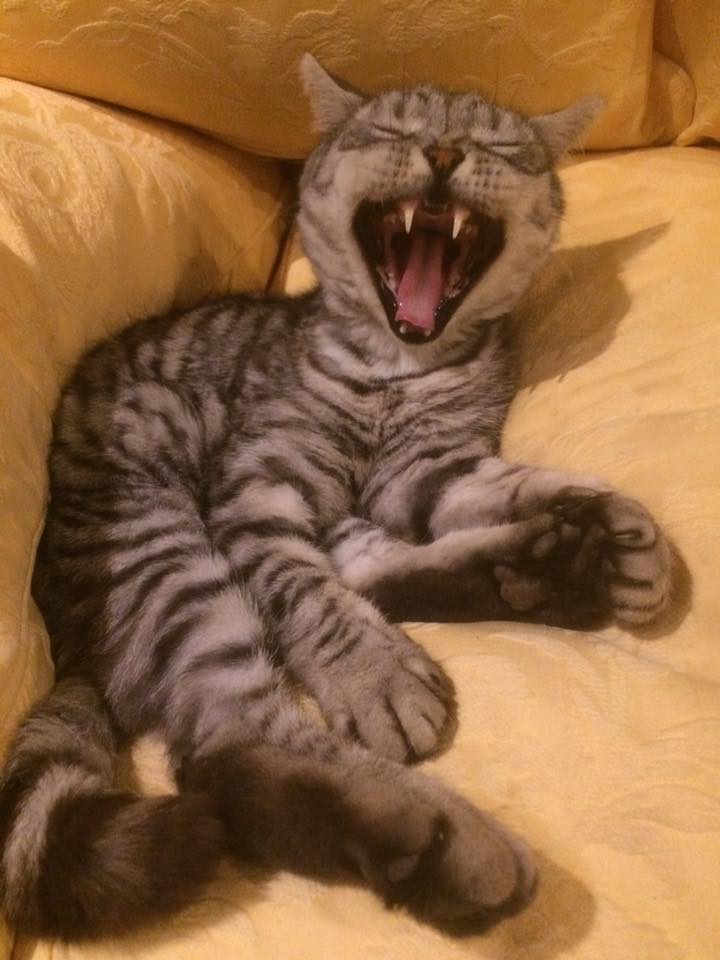Why is Oral Healthcare so Important in Our Pets?
Don’ you just love it when after a hard days work you step into the hallway and your dog bounces up to you to welcome you home? Tail wagging, tongue lolling, throwing himself at you excitedly…….and then it hits you! Not the paws on the chest at 15mph slamming you back against the front door, but the BREATH!!!
Dogs breath that can make you gag at five, ten, nay twenty paces. Then the ensuing saliva trail as the tongue hits you square on the chin, dragging up over your lips and nose! The ‘aroma’ lingering until you extract yourself, dive for the bathroom and scrub that lick right off…
Dont get me wrong I love doggie kisses, but I dont like bad breath and the bacteria that cause them. This goes for our feline friends too…you are not immune to a dose of halitosis either!
So why do our furbabies breath smell so badly?
Simples peeps lack of oral hygiene; lack of short and long term oral hygiene.
It is well known that good oral hygiene is linked to long term health benefits (apart from the obvious feeling of a good/clean and smell free oriface). Scientific research shows that poor oral hygiene increases your risk significantly in contracting various ailments and I am not just talking about cairies, peridontal diseases, tooth loss and the like.
Bacteria that originates in the mouth will travel around the body and can cause a host of health problems. Heart disease and stroke risks do increase significtly in pets with little or no oral health care. There can be an increase of dementia (yes cats and dogs can get dementia). Respiratory problems, diabetes, fertility, these areas have been recognised as having a direct link to a lack or oral hygiene.
Most scarily of all is cancer. Certain cancers that have been studied show the increase rate in those with poor oral hygiene to be as much as 54%! This does not just apply to our cats and dogs it applies to us as well.
Would it shock you to know that 85% of all cats and dogs have peridontal disease by the time they are 3 years of age? Shocked me…


What are Peridontal Diseases?
These are bacteral infections of the structures around the teeth. These include the gums, the cementum (that cover the roots of the tooth), the peridontal ligaments (that help to hold the tooth in place) and the alveolar bone.
The earliest stage of Peridontal Disease is Gingivitis and only affects the gums. Gingivitus will appear as inflamed gums, red and puffy sometimes bleeding and sometimes causing discomfort.
Peridontal Disease is an accelerating disease of the support tissue around the teeth and is the principle cause of early tooth loss. When bacteria and food mix in the mouth in cats and dogs it will form plaque much like it does in us. Plaque can be identified as a ‘white cheesey’ film that adheres to the teeth. If plaque is not removed it will fuse with minerals found in saliva and gingival crevioular fluid (a body defence mechanism found in the tooth socket) and become a hardened dental plaque known as Tartar.
This brown/black tinged with gold substance adheres to the dog/cat teeth and over time begins to build up along the gum line. This becomes a site for bacteria to adhere to and build up, invariably causing gingivitis. From here the bacteria work their way under the gum line and start to destroy the supporting tissue around the tooth leading ultimately to tooth loss. We now have Peridontitis.
So as you can see gingivtis and peridontitis together cause the changes in the mouth that we know as Periontal Disease. Left unchecked not only do we put our pets future health in jeopardy, the long and the short of it is they will have an unsightly mouth, lose teeth and have breath to die for!
So what can we do to promote our pets overall oral health?
You’ve gussed it…brush their teeth. Started at an early age cats and dogs get used to having their teeth cleaned; some positively love it! Don’t laugh, my Persian would bring her brush to me for teeth cleaning, but it had to be chcken flavoured!
Start to brush young pets teeth to prevent the build up of plaque, this prevents tartrar from forming and building up on the tooth and decreases the chance of developing gingivitis.
So what if your pet is not a puppy or kitten?
Go see your vet. It is never too late to start, but brushing on top of tartar will be of little use. A veterinary tooth clean is the only way to remove tartar above and below the gum line. Gingivits is reversible, Peridontal Disease is not. But it can be slowed significantly if home dental care is then followed routinely. There are other aids that will keep plaque at bay like certain ‘chews’ and particular diets and are recommended alongside regular brushing. Your vet or nurse can advise you of these.
I place a high value on my oral well being; having spent a small fortune on preventative measures (much to my dentists glee and my husbands horror). I place the same value on my children and pets oral care too. After all I want them to live healthily for as long as possible and pain free from dental disease.
This will not be for everyone; but it is for a lot of people another part of owning a dog or cat. Being a member of our Healthy Pet Club will entitle you to a free dental health check and 10% off dental procedures.
Long before my husband opened his sugery he said that he didn’t want a waiting room full of sick and smelly pets. I understand him and get what he means. He has always practiced preventative medicine and after all the mouth is the gateway to the body.
